Julian Ruddick
Real-world validation of safe reinforcement learning, model predictive control and decision tree-based home energy management systems
Aug 14, 2024Abstract:Recent advancements in machine learning based energy management approaches, specifically reinforcement learning with a safety layer (OptLayerPolicy) and a metaheuristic algorithm generating a decision tree control policy (TreeC), have shown promise. However, their effectiveness has only been demonstrated in computer simulations. This paper presents the real-world validation of these methods, comparing against model predictive control and simple rule-based control benchmark. The experiments were conducted on the electrical installation of 4 reproductions of residential houses, which all have their own battery, photovoltaic and dynamic load system emulating a non-controllable electrical load and a controllable electric vehicle charger. The results show that the simple rules, TreeC, and model predictive control-based methods achieved similar costs, with a difference of only 0.6%. The reinforcement learning based method, still in its training phase, obtained a cost 25.5\% higher to the other methods. Additional simulations show that the costs can be further reduced by using a more representative training dataset for TreeC and addressing errors in the model predictive control implementation caused by its reliance on accurate data from various sources. The OptLayerPolicy safety layer allows safe online training of a reinforcement learning agent in the real-world, given an accurate constraint function formulation. The proposed safety layer method remains error-prone, nonetheless, it is found beneficial for all investigated methods. The TreeC method, which does require building a realistic simulation for training, exhibits the safest operational performance, exceeding the grid limit by only 27.1 Wh compared to 593.9 Wh for reinforcement learning.
Predict. Optimize. Revise. On Forecast and Policy Stability in Energy Management Systems
Jun 29, 2024Abstract:This research addresses the challenge of integrating forecasting and optimization in energy management systems, focusing on the impacts of switching costs, forecast accuracy, and stability. It proposes a novel framework for analyzing online optimization problems with switching costs and enabled by deterministic and probabilistic forecasts. Through empirical evaluation and theoretical analysis, the research reveals the balance between forecast accuracy, stability, and switching costs in shaping policy performance. Conducted in the context of battery scheduling within energy management applications, it introduces a metric for evaluating probabilistic forecast stability and examines the effects of forecast accuracy and stability on optimization outcomes using the real-world case of the Citylearn 2022 competition. Findings indicate that switching costs significantly influence the trade-off between forecast accuracy and stability, highlighting the importance of integrated systems that enable collaboration between forecasting and operational units for improved decision-making. The study shows that committing to a policy for longer periods can be advantageous over frequent updates. Results also show a correlation between forecast stability and policy performance, suggesting that stable forecasts can mitigate switching costs. The proposed framework provides valuable insights for energy sector decision-makers and forecast practitioners when designing the operation of an energy management system.
TreeC: a method to generate interpretable energy management systems using a metaheuristic algorithm
Apr 17, 2023Abstract:Energy management systems (EMS) have classically been implemented based on rule-based control (RBC) and model predictive control (MPC) methods. Recent research are investigating reinforcement learning (RL) as a new promising approach. This paper introduces TreeC, a machine learning method that uses the metaheuristic algorithm covariance matrix adaptation evolution strategy (CMA-ES) to generate an interpretable EMS modeled as a decision tree. This method learns the decision strategy of the EMS based on historical data contrary to RBC and MPC approaches that are typically considered as non adaptive solutions. The decision strategy of the EMS is modeled as a decision tree and is thus interpretable contrary to RL which mainly uses black-box models (e.g. neural networks). The TreeC method is compared to RBC, MPC and RL strategies in two study cases taken from literature: (1) an electric grid case and (2) a household heating case. The results show that TreeC obtains close performances than MPC with perfect forecast in both cases and obtains similar performances to RL in the electrical grid case and outperforms RL in the household heating case. TreeC demonstrates a performant application of machine learning for energy management systems that is also fully interpretable.
Comparison and Evaluation of Methods for a Predict+Optimize Problem in Renewable Energy
Dec 21, 2022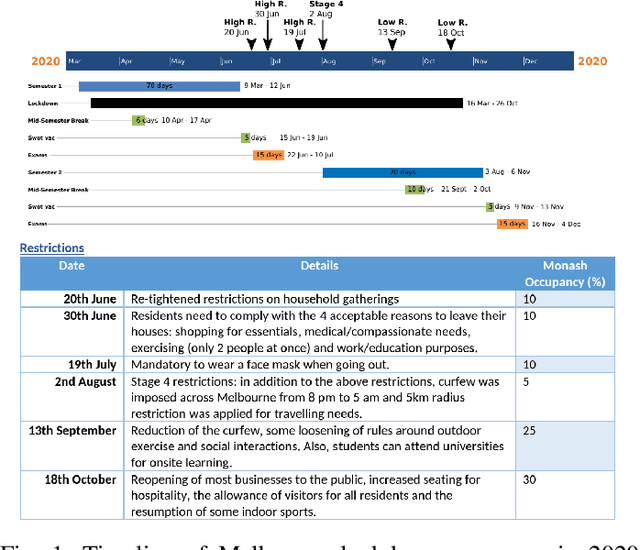
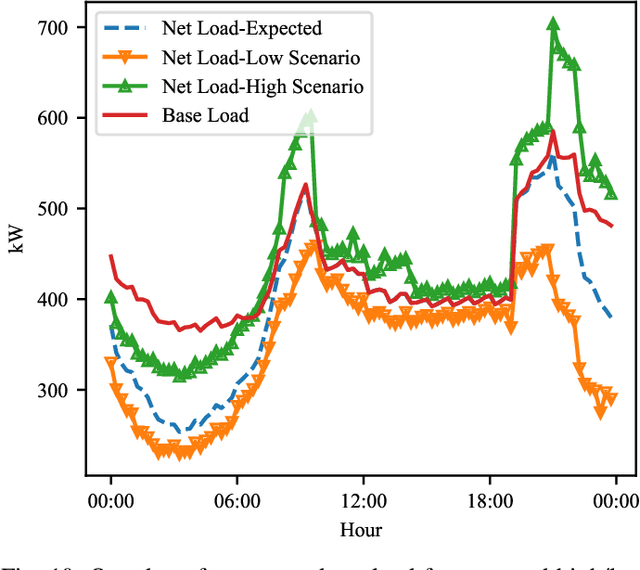
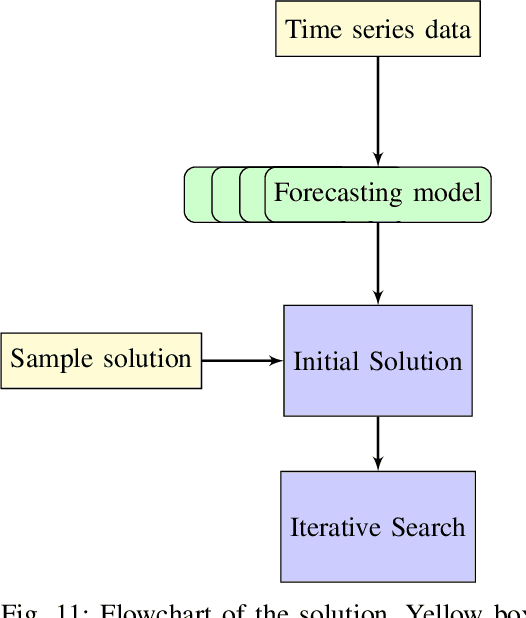
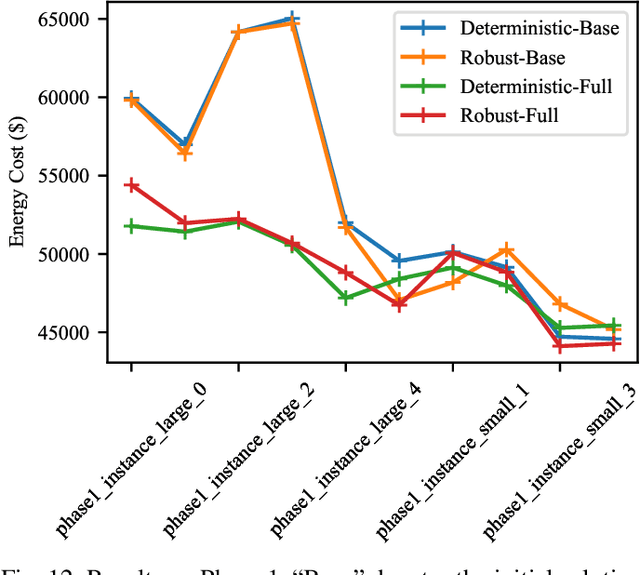
Abstract:Algorithms that involve both forecasting and optimization are at the core of solutions to many difficult real-world problems, such as in supply chains (inventory optimization), traffic, and in the transition towards carbon-free energy generation in battery/load/production scheduling in sustainable energy systems. Typically, in these scenarios we want to solve an optimization problem that depends on unknown future values, which therefore need to be forecast. As both forecasting and optimization are difficult problems in their own right, relatively few research has been done in this area. This paper presents the findings of the ``IEEE-CIS Technical Challenge on Predict+Optimize for Renewable Energy Scheduling," held in 2021. We present a comparison and evaluation of the seven highest-ranked solutions in the competition, to provide researchers with a benchmark problem and to establish the state of the art for this benchmark, with the aim to foster and facilitate research in this area. The competition used data from the Monash Microgrid, as well as weather data and energy market data. It then focused on two main challenges: forecasting renewable energy production and demand, and obtaining an optimal schedule for the activities (lectures) and on-site batteries that lead to the lowest cost of energy. The most accurate forecasts were obtained by gradient-boosted tree and random forest models, and optimization was mostly performed using mixed integer linear and quadratic programming. The winning method predicted different scenarios and optimized over all scenarios jointly using a sample average approximation method.
Evolutionary scheduling of university activities based on consumption forecasts to minimise electricity costs
Feb 25, 2022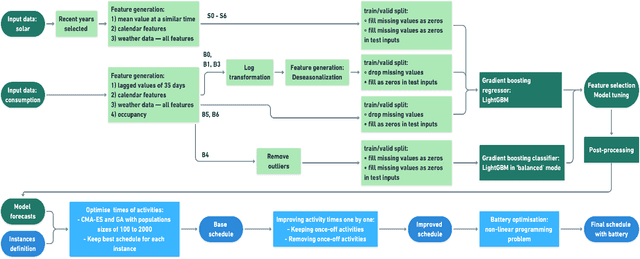
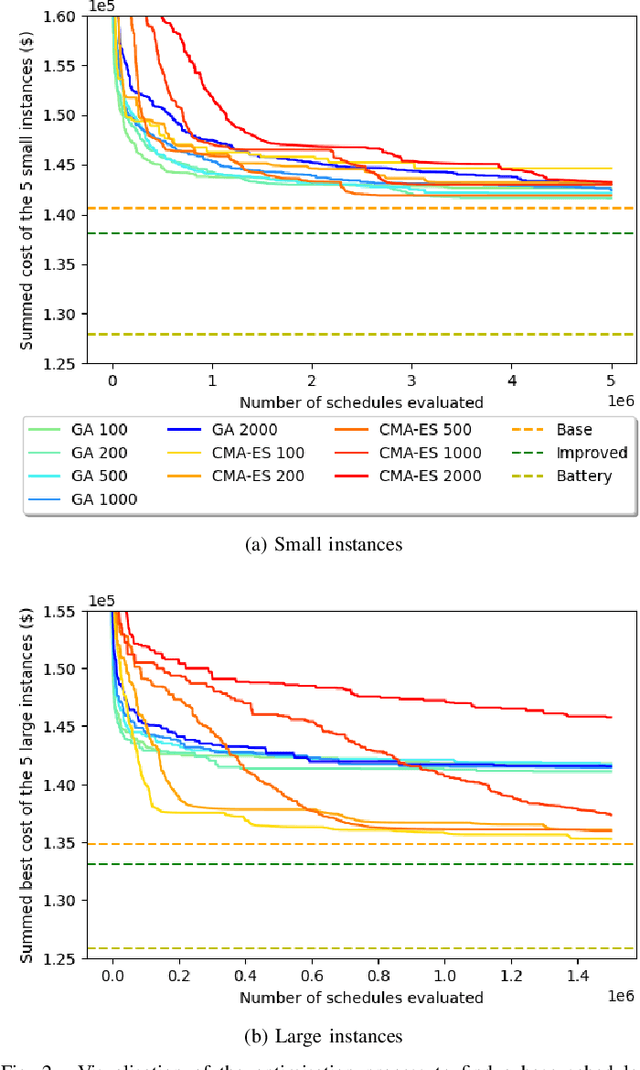
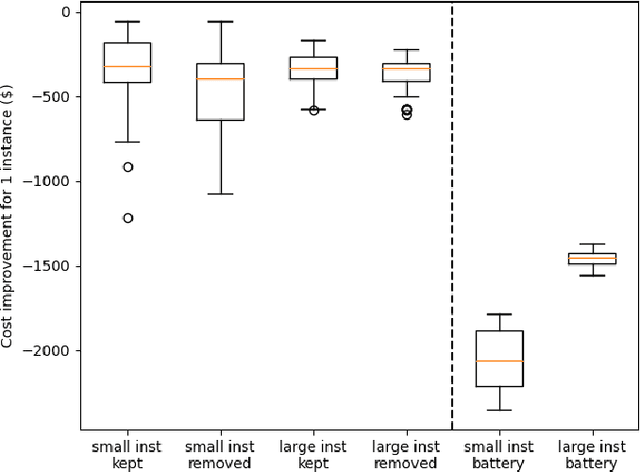
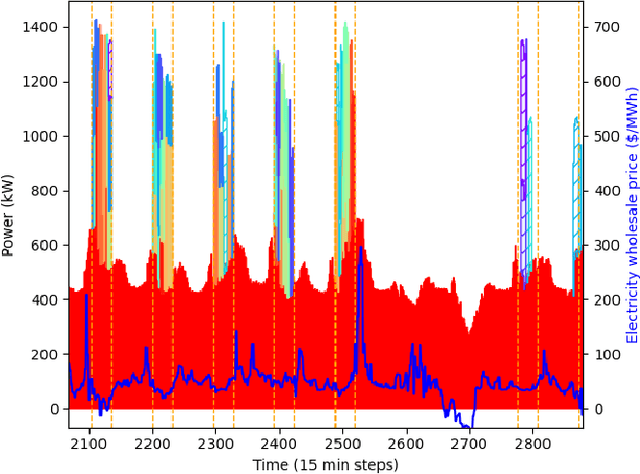
Abstract:This paper presents a solution to a predict then optimise problem which goal is to reduce the electricity cost of a university campus. The proposed methodology combines a multi-dimensional time series forecast and a novel approach to large-scale optimization. Gradient-boosting method is applied to forecast both generation and consumption time-series of the Monash university campus for the month of November 2020. For the consumption forecasts we employ log transformation to model trend and stabilize variance. Additional seasonality and trend features are added to the model inputs when applicable. The forecasts obtained are used as the base load for the schedule optimisation of university activities and battery usage. The goal of the optimisation is to minimize the electricity cost consisting of the price of electricity and the peak electricity tariff both altered by the load from class activities and battery use as well as the penalty of not scheduling some optional activities. The schedule of the class activities is obtained through evolutionary optimisation using the covariance matrix adaptation evolution strategy and the genetic algorithm. This schedule is then improved through local search by testing possible times for each activity one-by-one. The battery schedule is formulated as a mixed-integer programming problem and solved by the Gurobi solver. This method obtains the second lowest cost when evaluated against 6 other methods presented at an IEEE competition that all used mixed-integer programming and the Gurobi solver to schedule both the activities and the battery use.
 Add to Chrome
Add to Chrome Add to Firefox
Add to Firefox Add to Edge
Add to Edge